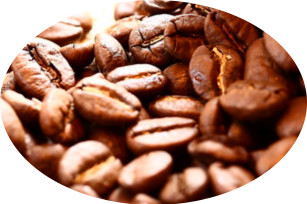Cat poop, musk, cat nest coffee.
Cat poop coffee is produced from the feces of Indonesian coconut cats (a kind of civet cat), so it is called "cat poop coffee". This kind of animal mainly feeds on coffee beans. After fermentation in coconut cat stomach, protein is destroyed, short peptides and more free amino acids are produced, the bitter taste of coffee will be reduced, and the feces discharged will be the main raw material. Since coffee beans cannot be digested, they will be excreted. After washing and baking, they become cat feces coffee. Coffee critic Chris Rubin said,"The bouquet is so rich and intense, and the coffee is incredibly rich, almost syrupy. The thickness and chocolaty texture of it, and lingering on the tongue for a long time, pure aftertaste."
Coconut cats are omnivorous animals. In addition to eating seeds for a living, they also eat insects, snakes, birds, amphibians and reptiles. Therefore, the feces discharged by real wild coconut cats will be mixed with various substances. Indonesian local farmers catch coconut cats to raise and feed coffee beans to make them. However, there was still a certain difference between artificial cultivation and natural cultivation.
In the coffee industry, cat poop coffee is widely regarded as a novelty product. According to the Specialty Coffee Association of America (SCAA),"the consensus in the industry is that it tastes bad." SCAA quoted a coffee expert as saying: "Obviously, the selling point of cat poop coffee lies in its story rather than its quality. Cat poop coffee scored two points lower than the lowest score of the other three coffees on SCAA criteria. Presumably the cat poop coffee processing reduces the acidity and flavor of the premium coffee and makes it more bland. Of course, many people seem to see this bland taste as a plus for this coffee."
Washington Post food columnist Tim Carman once commented on cat poop coffee sold in the United States and concluded that "it tastes just like Folger coffee." It smells like rotting, lifeless. It's like fossilized dinosaur shit in bathwater. I can't finish it."
Civets like to pick the sweetest, purest and juiciest fruits of the coffee tree for food. The coffee fruit passes through its digestive system, and only the pulp on the outside of the fruit is digested. The hard coffee beans are then excreted intact by the civet's digestive system.
In this way, in the process of digestion, the coffee beans have produced unparalleled magical changes, the flavor tends to be unique, the taste is particularly mellow, and the rich and mellow sweet taste is unmatched by other coffee beans. This is because the civet's digestive system destroys the protein in the coffee beans, making the coffee produced by the protein much less bitter, but increasing the round taste of the coffee beans.
Because wild civets are obviously better at picking good coffee fruits, this coffee has a unique character.
Cat poop coffee, Indonesia. In the early 18th century, the Dutch established coffee plantations in the Indonesian colonies of Sumatra and Java, and prohibited the locals from picking and eating their own coffee fruits. Indonesian locals accidentally discovered that civet cats love to eat these coffee fruits and will expel the beans intact when defecating.
Civets eat only the sweetest beans, which is a natural selection in itself, and second, locals find that these beans ferment in the cat's stomach and produce coffee that tastes better than normal. The delicious cat feces coffee gradually became famous and became a hot commodity in the international market.
Market flooding:
in captivity
Civets are nocturnal animals that inhabit jungles and eat very little. Coffee beans produced by wild civets are very rare, and only artificial breeding can obtain more cat feces coffee. Some unscrupulous traders keep these animals in small, dirty cages, forcing them to eat constantly, and they are on the verge of collapse, biting each other, biting their legs, bleeding, and dying one by one.
too many fakes
85% of cat poop coffee on the market is fake, and many coffee companies label regular coffee as "cat poop" to drive up prices. Even if it came from real cat feces, it was basically a product of industrial production. It was almost impossible for it to be original.
quality
Coffee beans artificially fed to civet cats are not screened and are not excellent beans!
Driving bad wind
Cat poop coffee has led to a bad atmosphere, elephant poop coffee, squirrel poop coffee, bird poop coffee have come out, the same method of cruelty.
Coffee beans generally go through the process of fermentation of the shell. Coffee beans are in the intestinal tract of the civet. Special bacteria provide a unique fermentation environment. The flavor becomes unique and especially thick and mellow. Coffee beans fermented by civet intestines are especially thick and fragrant.
Eva, the owner of Te Cafe, is a coffee enthusiast who travels around the world every year to collect rare products. She told reporters that "cat poop coffee" was once a tribute from Indonesia to the Dutch royal family. At that time, the industry regarded this coffee with the name "cat poop" as a joke, until National Geographic magazine carried a special report on this, everyone gradually became interested in this "cat poop coffee".

Important Notice :
前街咖啡 FrontStreet Coffee has moved to new addredd:
FrontStreet Coffee Address: 315,Donghua East Road,GuangZhou
Tel:020 38364473
- Prev

Civet Coffee Flavor Civet Coffee Features Civet Coffee Taste
Cow coffee is produced from the feces of Indonesian coconut cats (a civet cat), so it is called cat poop coffee. This kind of animal mainly feeds on coffee beans. After fermentation in the coconut cat stomach, protein is destroyed, short peptides and more free amino acids are produced, the bitter taste of coffee will be reduced, and the feces discharged will be the main raw material. Since coffee beans cannot be digested, they will be discharged.
- Next

Peruvian coffee flavor Peruvian coffee characteristics Peruvian coffee taste
Peruvian coffee beans are best known for their coffee beans from Chimacha Mayou in the middle and Cusco in the south. In addition, some areas in northern Peru also produce characteristic organic coffee. Organic coffee is made of beans grown in the shade of trees. Although the yield of coffee beans is not high because of the method of planting in the shade, its quality can reach the level of gourmet coffee. This is due to
Related
- Detailed explanation of Jadeite planting Land in Panamanian Jadeite Manor introduction to the grading system of Jadeite competitive bidding, Red bid, Green bid and Rose Summer
- Story of Coffee planting in Brenka region of Costa Rica Stonehenge Manor anaerobic heavy honey treatment of flavor mouth
- What's on the barrel of Blue Mountain Coffee beans?
- Can American coffee also pull flowers? How to use hot American style to pull out a good-looking pattern?
- Can you make a cold extract with coffee beans? What is the right proportion for cold-extracted coffee formula?
- Indonesian PWN Gold Mandrine Coffee Origin Features Flavor How to Chong? Mandolin coffee is American.
- A brief introduction to the flavor characteristics of Brazilian yellow bourbon coffee beans
- What is the effect of different water quality on the flavor of cold-extracted coffee? What kind of water is best for brewing coffee?
- Why do you think of Rose Summer whenever you mention Panamanian coffee?
- Introduction to the characteristics of authentic blue mountain coffee bean producing areas? What is the CIB Coffee Authority in Jamaica?

